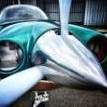N9156Z Minnesota crash final report
-
Members Online
- Parker_Woodruff
- Tcfurk
- PMcClure
- Planegary
- 802flyer
- Pinecone
- Mscheuer
- David_at_HolyMicro
- Jeremyjford
- Vance Harral
- Matthew P
- Shadrach
- Paul Thomas
- Stubby
- Hradec
- Kenfen
- TCC
- Scottknoll
- Fly Boomer
- Hank
- CMMPilot
- NickG
- Stephan Kablitz
- AndreiC
- Rmfriday
- Nova_flyer
- Brian2034
- JohnnyJ
- rickseeman
- Elijah
- Ragsf15e
- richardbrochu27
- haymak3r
- Andy95W
- ericrynehess
- philiplane


Recommended Posts
Join the conversation
You can post now and register later. If you have an account, sign in now to post with your account.